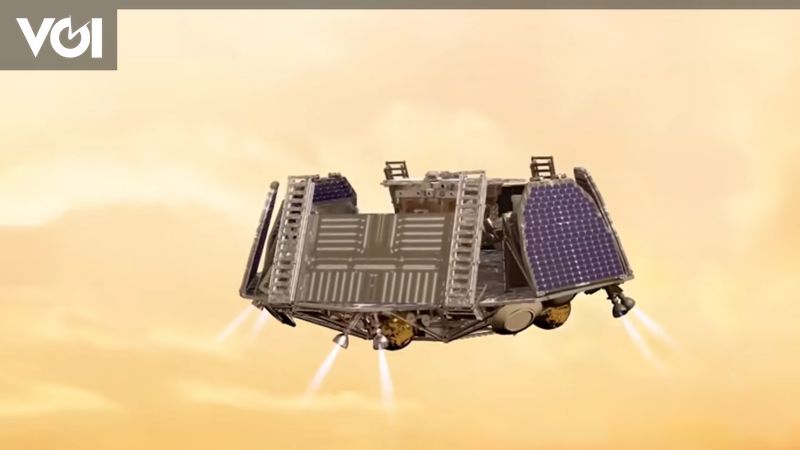JAKARTA – The Exomars Rocomos team from the European Space Agency (ESA) has just conducted a parachute test on a rover robot. This trial aims for a landing mission on the Red Planet or Mars in 2023.
It is known, landing a robot rover on Mars is a fairly difficult challenge. Next year it is reported that NASA’s Perseverance rover, Curiosity and China’s Zhurong will join other Mars rovers such as ESA and the Roscosmos ExoMars team dubbed the Rosalind Franklin rover on Mars.
“The ExoMars team has conducted a parachute drop test. This is important in preparation for a safe landing on Mars in 2023. The Rosalind Franklin rover will search for signs of past life beneath the Martian surface with a two-meter drill and a unique onboard laboratory,” said ESA as quoted by Digital Trends, Monday, 6 September.
“Russian surface science platform Kazachok will study the environment at the landing site. Landing on Mars is always a challenging endeavor and all possible parameters are taken into account.”
To test it, the robotic rover was parachuted and lifted 18 miles into the air using a balloon. Then the pilot launch is used to deploy the parachute and the results are recorded to check everything is working properly. Each of the two parachutes is tested separately, although in actual missions they must operate sequentially.
The parachute consists of several elements, so the tests were carried out on the first stage supersonic parachute and the second main stage subsonic parachute. The first stage slows the spacecraft from speeds faster than the speed of sound, while the second stage spreads out later, after which the craft slows to below the speed of sound.
The two-part system was necessary because the atmosphere on Mars is so thin, only one percent of the density of Earth’s atmosphere, that the parachute has to work extra hard to slow the craft as it approaches the Martian surface. After parachuting, the propulsion system slows the plane even further before landing gently on the surface.
“Going to Mars is quite an exciting adventure, and it took us quite a long time to choose the most appropriate landing site on Mars. It took us five years, actually, to find a place of scientific interest, where we could potentially find some traces of past life, and should also be a safe area to land in,” said Exomars team leader Thierry Blancquart.
For information, the team selected a landing area called Oxia Planum, which is lower in elevation than most of the planet, at 1.7 miles below average altitude. That means the plane has more time to brake as it moves through the atmosphere. The launch window for the ExoMars rover is scheduled to begin on September 20 this year, with the goal of landing on Mars on June 10, 2023.
– .


